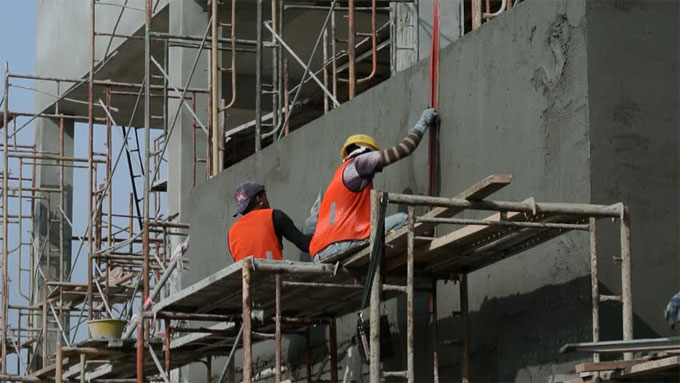
Plastering work in construction and its checklists
Plastering is the method of covering rough surfaces as well as irregular surfaces by a plastic material alias plaster or mortar to make a level, smooth, regular, clean and stable surface.
Plaster is formed by mixing lime or gypsum, sand and water. Sometimes, fiber is also added. It is consolidated to smooth solid and utilized for coating walls and ceilings.
Plastering Materials - Ordinary Portland Cement (OPC), Lime or Clay, Aggregates, Water, Admixture
Characteristics of good plaster:
a. It should be rigid and long-lasting
b. It should be capable of being used throughout all weather condition
c. It should comply with the background and all climatic change.
d. It should be inexpensive
e. It should contain strong insulation capacity against sound and superior resistance capacity against fire.
f. It should have the ability to examine the infiltration of moisture from the surface.
The following points should be taken into consideration at the time of plastering in construction works:
BEFORE PLASTERING:
a. Verify Drg./ Number/ Date & Revision for all other services ranging from electrical, plumbing etc.,
b. Examine hacking/ Button marking / Mortar thickness
c. Arrangement of chicken mesh for conduits, column brick work joints & other
d. Development of Surface ? Eliminate moss/ efflorescence & dampen surface
e. Material amassed ? Cement, sand at different locations
f. Dampening of surface earlier
g. Quality of Sand ? screening silt
h. Test the Beam, B/W joints packing with Nito Bond AR
i. Examine for Door Frame Projections
DURING PLASTERING:
1. Platform for mortar mixing on tray
2. Examine thickness/ level & line & right angle
3. Mix Ratio
4. Inclusion of water proofing compound
5. Exact roughing of first coat
6. Examine build up of mortar spills
7. Cleaning of dead mortar
8. Examine waviness
9. Examine grooves/ drip moulds
10. Use of cement slurry on concrete surface/Space for tile area, cutting for skirting area
11. Examine loft thickness and top surface in dead level W/Robe size
AFTER PLASTERING:
1. Curing water circulation for several locations
2. Examine hollowness
3. Examine cracks
4. Examine the date of plastering for curing


